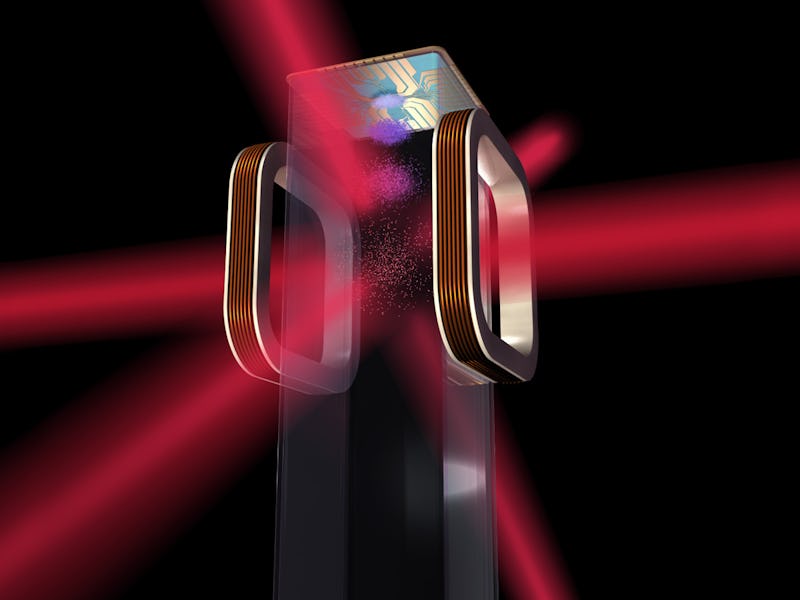Outkast’s Andre 3000 famously asked “what’s cooler than being cool,” but scientists at NASA want to blow way past “ice cold” and create something 100 million times colder than the vacuum of space. They’ll use this self-described “coolest spot in the universe” to study how atoms behave at almost unfathomably low temperatures.
The aptly named Cold Atom Laboratory will be about the size of an ice chest, and NASA is finishing it up so they can send it up to the International Space Station this summer. The box, known as CAL, freezes gas atoms to a billionth of a degree above absolute zero — a physically impossible temperature that’s so cold that all atoms would stop moving entirely.
At a billionth of a degree above absolute zero (negative 459.67 Fahrenheit), however, atoms still move, slightly. They just behave in crazy ways. At temperatures like they’ll experience inside CAL, atoms can take on a new form of matter known as a Bose-Einstein condensate. This is where the normal rules of physics stop applying, and quantum physics steps in.
“If you had superfluid water and spun it around in a glass, it would spin forever,” Anita Sengupta, the CAL project manager at NASA’s Jet Propulsion Laboratory, explained in a release. “There’s no viscosity to slow it down and dissipate the kinetic energy. If we can better understand the physics of superfluids, we can possibly learn to use those for more efficient transfer of energy.”
Scientists have created Bose-Einstein condensates before, but they’ve never been able to do it in space. Earth gravity makes it so the superfluids are only observable for fractions of a second, but in space NASA’s expecting they’ll stick around for 5 to 10 seconds — to start. CAL, which will use lasers, a vacuum chamber, and an “electromagnetic knife” to carve the very energy out of gaseous atoms, therefore offers NASA a unique opportunity.
“Studying these hyper-cold atoms could reshape our understanding of matter and the fundamental nature of gravity,” said CAL Project Scientist Robert Thompson. “The experiments we’ll do with the Cold Atom Lab will give us insight into gravity and dark energy — some of the most pervasive forces in the universe.”
NASA is currently undergoing rigorous tests to make sure it’s ready to go in August, when a SpaceX CRS-12 will take it up to the ISS.
